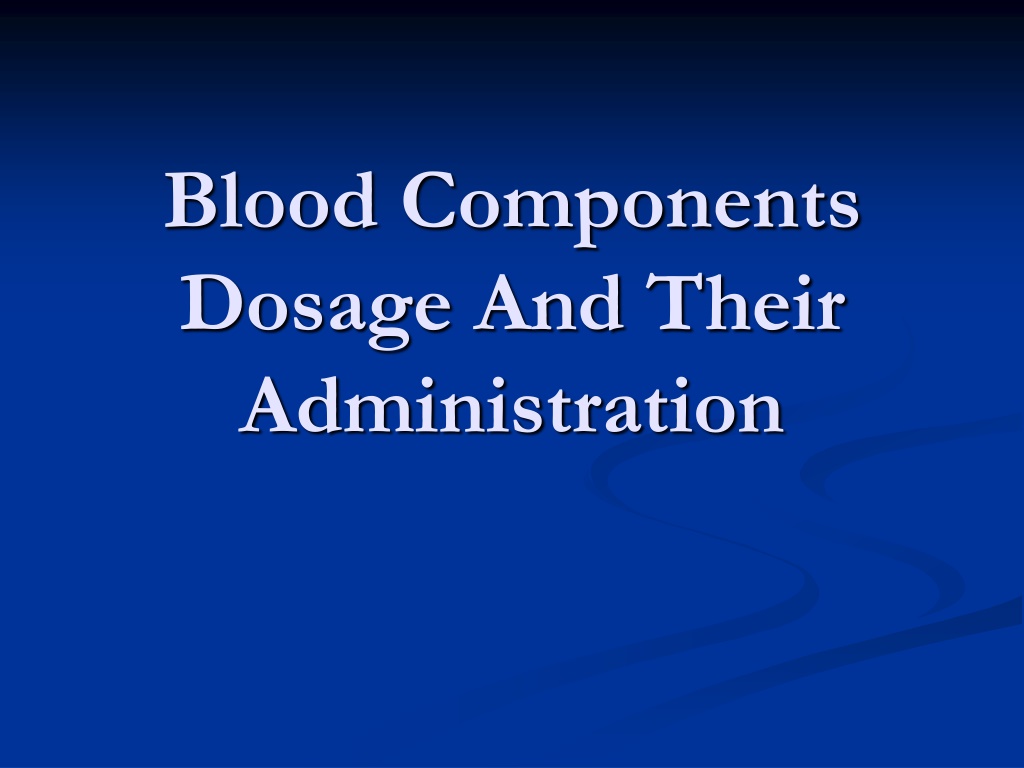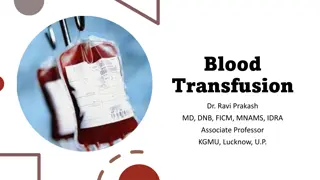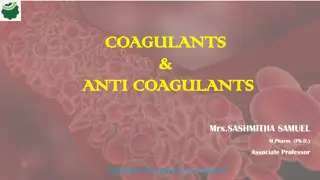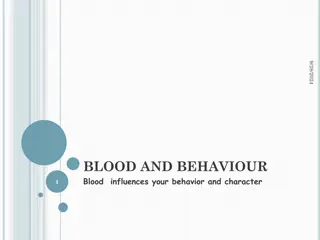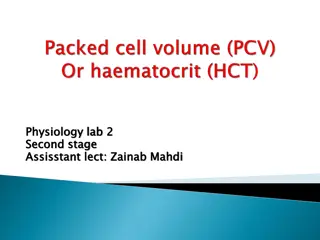Understanding Blood Components and Their Administration
Effective blood transfusion therapy relies on the availability and proper administration of various blood components. Separating blood components allows for better patient care by matching transfusions to individual needs and avoiding unnecessary components. Different blood products like packed red blood cells, fresh frozen plasma, platelets, and others play vital roles in transfusion medicine. Knowing the principles of component preparation and definitions of blood products is fundamental in maintaining a safe and efficient blood supply system.
Download Presentation

Please find below an Image/Link to download the presentation.
The content on the website is provided AS IS for your information and personal use only. It may not be sold, licensed, or shared on other websites without obtaining consent from the author. Download presentation by click this link. If you encounter any issues during the download, it is possible that the publisher has removed the file from their server.
E N D
Presentation Transcript
Blood Components Dosage And Their Administration
Effective blood transfusion therapy depends on availability of different blood components Components used separately or in combination can meet most patients transfusion needs and keep the risk of transfusion to minimum
Separation of blood components are desirable because Separation of blood components allows optimal survival for each component Allows transfusing specific blood components according to the need of the patient Allows use of unnecessary component which may be contraindicated in a patient 1. 2. 3.
4. Several patients can be treated from one unit of donated blood 5. Use of blood components supplements blood supply and adds to the blood inventory
Whole Blood Processed within 8 hours ) Packed red blood cells Fresh frozen plasma Platelets
Component preparation Principle - Differential centrifugation Red cells Packed cells Red cells + additive Plasma Bank plasma Fresh frozen Cryo supernate Platelets Platelet rich concentrate Platelet rich plasma Cryoprecipitate Plasma + Platelets Whole blood Buffy RBC
DEFINITIONS BLOOD PRODUCT = Any therapeutic substance prepared from human blood WHOLE BLOOD = Unseparated blood collected into an approved container containing an anticoagulant preservative solution BLOOD COMPONENT = 1. A constituent of blood , separated from whole blood such as Red cell concentrate Plasma Platelet concentrates 2. Plasma or platelets collected by apheresis 3. Cryoprecipitate prepared from fresh frozen plasma
Blood Components THE PRBC Storage - 2 6 O C Unit of issue - 1 donation ( unit or pack ) Administration - ABO & Rh compatible - Never add medication to a unit - Complete transfusion within 4 hrs of commencement M e m 1
Blood Components 2. Red cell concentrate ( packed red blood cells )- whole blood without plasma. Hct 55 -75 % , Hb approximately 20 g /100 ml
Indications Trauma - Acute blood loss with > 20% loss of blood volume Surgery - Trigger 10gm% - 8gm% Rate of development of anemia, General condition and type of surger Radiotherapy
Dosage & Administration Dosage - 1 unit/10 kg body wt Adult dose is 4-8 units Administration - Preferably ABO & Rh group specific but not essential Other groups can be used
PLATELETS Platelet units can be either Random donor units Apheresis units 1 random donor unit contains 55 x109 platelets 1 apheresis unit contains 240x109
Indications Production - Aplasia / Neoplasia Usage - TTP(thrombotic thrombocytopenic purpura), DIC(disseminated intravascular coagulation) Destruction immune thrombocytopenic purpura.Sequestration Hyper- splenism
Guidelines for Platelet Tx. Mild - 50,000-1,00,000/ l Tx - usually not required Moderate - 20,000-50,000/ l Tx-if symptomatic or has to undergo surgery/trauma Severe - < 20,000/ l Risk of bleeding - high Prophylactic Tx
Indications for platelet transfusion BLEEDING due to thrombocytopaenia Due to platelet dysfunction Prevention of spontaneous bleeding with counts < 20,000
IMPORTANT PRECAUTIONS Stored at 20-24 Degree celcius. Constantly agitated Only last for 5 days Infused in 30 mins
Fresh Frozen plasma Fresh frozen plasma labile & nonlabile clotting factors, albumin and immunoglobulin. Factor VIII ( 8 ) level at least 70 % of normal fresh plasma level Storage - 20 C for 1 yr, - 65 C for 7 yrs. Before use thawed at 37 o C -
Fresh frozen plasma Indications - Replacement of multiple coagulation factor deficiencies eg Liver disease Anticoagulant overdose Depletion of coagulation factors in pts receiving large volume transfusions DIC (disseminated intravascular coagulation) -
FRESHFROZEN PLASMA Indication Clinically significant deficiency of Factors II, V, X, XI Replacement of multiple coagulation factor deficiencies :- liver disease , warfarin treatment, dilutional and consumption coagulopathy Contraindication Volume expansion Immunoglobulin replacement Nutritional support Wound healing 19
FRESH FROZEN PLASMA Precaution Acute allergic reaction are common Anaphylactic reaction may occur Hypovolemia alone is not an indication for use Dosage - Initial dose of 15 - 20 ml / kg Administration Must be ABO compatible, Rh not required Infuse as soon as possible after thawing ( within 6 hrs ) using standard blood administration set 20 MD-3-49 30/11/49
FFP Fresh Frozen Plasma Plasma collected from single donor units or by apheresis Frozen within 8 hours of collection -40o C Can last for a year
Dosage & Administration for FFP Dosage - 10-15 ml/Kg(Approx 2-3 bags for an adult) Administration - Thawed at +37o C before transfusion ABO compatible Group AB plasma can be used for all patient
Do`s and Dont`s In Blood and Blood Components
DO`S Complete the blood request form Order blood in advance, if possible Provide clear information on blood products being requested, number of units requested, reason for transfusion, urgency 24
Risk Benefit Analysis risk > benefit benefit > risk Hb gm/dl 4 5 6 7 8 9 10 11 12 13 14 why transfuse why not transfuse individual patient factors decide transfusion trigger
Time Limits for Infusion Blood/ blood product Start infusion Complete infusion Whole blood/ red cells from ambient temperature) refrigerator within 30 min. of within 4 hour removing pack (less in high Platelet concentrates immediately within 20 min FFP within 30 min within 20 min 26
RECORDING OF TRANSFUSION Consent from patient and/or relatives Reason for transfusion Signature of the prescribing clinician Pre-transfusion checks of : patient s identity, blood pack, compatibility label signature of the person performing the check Transfusion type and volume of component, donation number, blood group, time at which transfusion commenced, signature of person administering the transfusion Any transfusion reaction Return the transfusion slip to the blood bank 27
